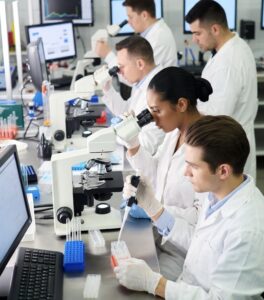- Complementary pain medicine
- Classification of complementary and alternative medicine
- Biologically based
- Manipulative treatments
- Energy based
- Mind-body techniques
- Alternative medical systems
- Classification of complementary and alternative medicine
- Nursing Actions
- Assess pain thoroughly and adequately
- Administer medications in a timely manner
- Evaluate and monitor the child’s response to treatments
- Titrate analgesic medications to achieve optimal dosing
- Make recommendations for alternate medications if needed
- Consequences of untreated Pain in Infants
- Acute Consequences
- Periventricular-intraventricular hemorrhage
- Increased chemical and hormone release
- Breakdown of fat and carbohydrate stores
- Prolonged hyperglycemia
- Higher morbidity for neonatal intensive care unit patients
- Memory of painful events
- Hypersensitivity to pain
- Prolonged response to pain
- Inappropriate innervation of the spinal cord
- Inappropriate response to nonnoxious stimuli
- Lower pain threshold
- Potential Long-Term Consequences
- Higher somatic complaints of unknown origin
- Greater physiologic and behavioral responses to pain
- Increased prevalence of neurologic deficits
- Psychosocial problems
- Neurobehavioral disorders
- Cognitive deficits
- Learning disorders
- Poor motor performance
- Behavioral problems
- Attention deficits
- Poor adaptive behavior
- Inability to cope with novel situations
- Problems with impulsivity and social control
- Learning deficits
- Emotional temperament changes in infancy or childhood
- Accentuated hormonal stress responses in adult life
- Common Pain States in Children
- Levels of Sedation
- Minimal Sedation (Anxiolysis)
- Patient responds to verbal commands.
- Cognitive function may be impaired.
- Respiratory and cardiovascular systems are unaffected.
- Moderate Sedation (Previously Conscious Sedation)
- Patient responds to verbal commands but may not respond to light tactile stimulation.
- Cognitive function is impaired.
- Respiratory function is adequate; cardiovascular system is unaffected.
- Deep Sedation
- Patient cannot be easily aroused except with repeated or painful stimuli.
- Ability to maintain airway may be impaired.
- Spontaneous ventilation may be impaired; cardiovascular function is maintained.
- General Anesthesia
- Loss of consciousness, patient cannot be aroused with painful stimuli.
- Airway cannot be maintained adequately, and ventilation is impaired.
- Cardiovascular function may be impaired.
- Minimal Sedation (Anxiolysis)
- Painful and invasive procedures
- Procedural sedation and analgesia
- Postoperative pain
- Associated with surgery
- Combination of medications
- Burn pain
- Multiple components
- Difficult and challenging to control
- Recurrent headaches
- Tension, dental braces, weakness of eye muscles, sinusitis, epilepsy, sleep apnea, injury
- Recurrent abdominal pain
- Common in children
- Pain associated with sickle cell disease
- ED visits for opioid treatment
- Cancer pain in children
- Most prevalent symptom is pain
- Pain and sedation in end-of-life care
- Comfort can be relief with a combination of opioids and adjuvant analgesics
- Levels of Sedation
- Acute Consequences

Reduce Your Risk from Respiratory Viruses This Holiday Season
November 20, 2024, 12:30 PM EST For Everyone NOV. 20, 2024 WHAT TO KNOW Flu, COVID-19, and RSV illnesses are at low levels right now



